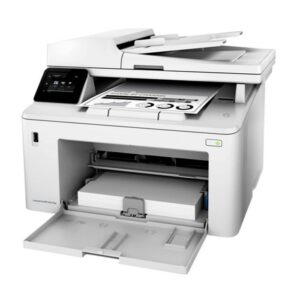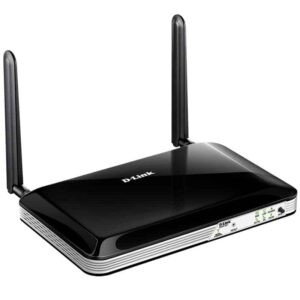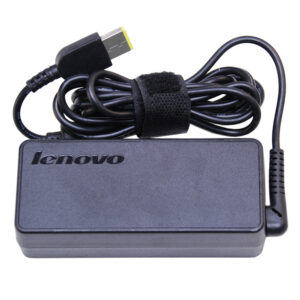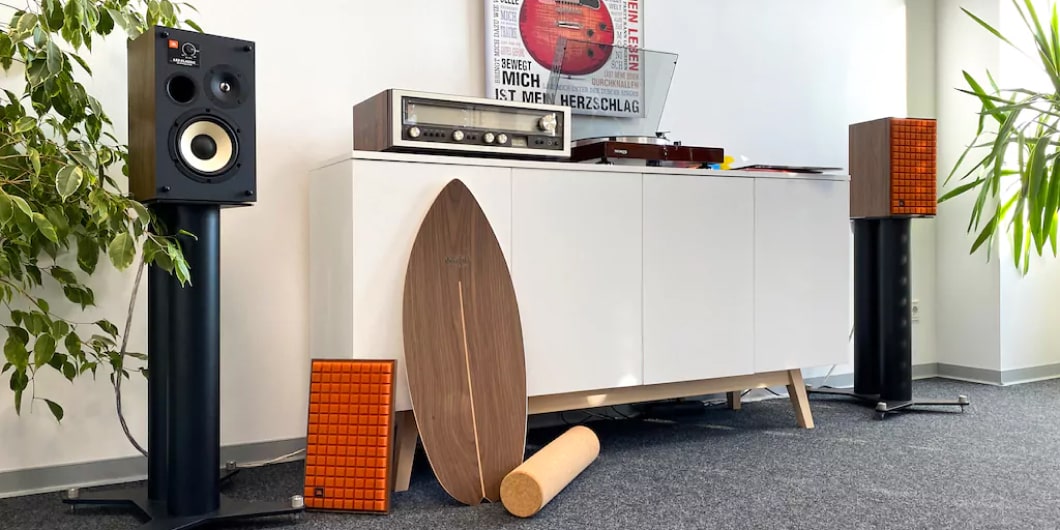Choosing a Hi-Fi stereo system can feel overwhelming with the sheer number of options available. Whether you’re an audiophile looking for the perfect sound quality or just someone who wants to upgrade their home audio setup, finding the right system is key to enjoying an immersive audio experience. In this guide, we’ll break down everything you need to know to make an informed decision, from understanding the components to what to look for when purchasing a Hi-Fi stereo system.
Outline of the Article
- Introduction to Hi-Fi Stereo Systems
- What Is a Hi-Fi Stereo System?
- Why Invest in a Hi-Fi Stereo System?
- Key Components of a Hi-Fi Stereo System
- Speakers
- Amplifier
- Receiver
- Turntables and CD Players
- Understanding Sound Quality
- What Makes Good Sound Quality?
- The Role of Frequency Response
- Distortion and Sound Clarity
- Types of Hi-Fi Stereo Systems
- All-in-One Systems
- Separates Systems
- Factors to Consider When Choosing a Hi-Fi Stereo System
- Room Size
- Power Output
- Connectivity Options
- Budget
- Top Hi-Fi Stereo Brands to Consider
- How to Match Components for Optimal Sound
- Hi-Fi Stereo System Placement Tips
- Analog vs. Digital: What’s the Difference?
- The Importance of Cables and Accessories
- Maintaining Your Hi-Fi Stereo System
- Common Mistakes to Avoid When Buying a Hi-Fi Stereo System
- Conclusion: Finding the Right Hi-Fi Stereo for You
- FAQs

Introduction to Hi-Fi Stereo Systems
When it comes to audio, not all sound systems are created equal. Hi-Fi, short for high-fidelity, refers to stereo systems designed to reproduce sound as accurately and clearly as possible, often delivering the kind of audio quality that makes you feel like you’re in the same room as the performers. Choosing a Hi-Fi system is not just about picking out speakers and an amplifier; it’s about creating a seamless balance between all components to achieve audio nirvana. But how do you go about selecting the best one?
What Is a Hi-Fi Stereo System?
A Hi-Fi stereo system is a collection of audio equipment that works together to produce high-quality sound. Unlike regular consumer audio systems, which may focus more on convenience and affordability, Hi-Fi systems prioritize sound reproduction with minimal distortion and maximum clarity. They are often preferred by music lovers and audiophiles who want to experience every note, instrument, and vocal detail just as the artist intended.
Why Invest in a Hi-Fi Stereo System?
The main reason to invest in a Hi-Fi stereo system is the superior audio experience it provides. Whether you enjoy classical music, rock, or podcasts, a well-chosen Hi-Fi system delivers sound with precision, depth, and clarity. You can also customize the system to your preferences, ensuring that every aspect of your listening experience is tailored to your tastes. Moreover, a Hi-Fi system is built to last, offering durability and timeless sound quality that doesn’t fade over the years.
Key Components of a Hi-Fi Stereo System
To get the best out of a Hi-Fi stereo system, you need to understand its key components:
Speakers
Speakers are arguably the most important part of any Hi-Fi system. They convert electrical signals into sound, so choosing the right speakers is critical for achieving excellent sound quality. When selecting speakers, consider factors such as size, type (floor-standing vs. bookshelf), and sensitivity.
Amplifier
The amplifier powers your speakers and controls the volume and signal strength. Without a good amplifier, even the best speakers won’t perform to their full potential. Some Hi-Fi systems come with integrated amplifiers, while others require a separate unit.
Receiver
The receiver acts as the central hub of your Hi-Fi system, connecting all the components and managing inputs and outputs. Some receivers also include built-in amplifiers, though many audiophiles prefer a separate amp for more control over the sound.
Turntables and CD Players
If you’re a vinyl enthusiast or still love your CD collection, you’ll want to include a high-quality turntable or CD player in your Hi-Fi system. These devices are designed to deliver the best possible sound from physical music formats.
Understanding Sound Quality
Good sound quality is the hallmark of a Hi-Fi stereo system. But what exactly does that mean?
What Makes Good Sound Quality?
Sound quality is determined by several factors, including clarity, balance, and depth. A good Hi-Fi system should reproduce music without added noise or distortion, accurately reflecting the original recording.
The Role of Frequency Response
The frequency response of a speaker or system refers to how well it reproduces different sound frequencies. A broad frequency range (typically 20 Hz to 20 kHz) ensures that the system can handle both low bass and high treble sounds without distortion.
Distortion and Sound Clarity
Distortion happens when an audio signal is altered as it passes through the system, usually resulting in unpleasant sounds. High-quality Hi-Fi systems minimize distortion, ensuring clear and crisp audio even at high volumes.
Types of Hi-Fi Stereo Systems
There are two primary types of Hi-Fi stereo systems to choose from:
All-in-One Systems
All-in-one Hi-Fi systems come pre-configured with everything you need in one package. They’re convenient and easy to set up, making them ideal for beginners. However, they may not offer the same flexibility or sound quality as separates.
Separates Systems
In a separates system, each component (amplifier, speakers, receiver, etc.) is chosen individually. This allows for more customization and potentially better sound quality, but it can also be more complex and expensive to set up.
Factors to Consider When Choosing a Hi-Fi Stereo System
Room Size
The size of your listening space plays a huge role in determining the type of Hi-Fi system you should buy. Large rooms require more powerful speakers and amplifiers, while smaller spaces might benefit from compact systems.
Power Output
Measured in watts, power output affects how loud your system can get. For most home systems, an amplifier with 50-100 watts per channel is sufficient, but larger rooms or outdoor spaces may need more power.
Connectivity Options
Look for a system that supports the types of connections you need, whether it’s Bluetooth, Wi-Fi, or traditional wired inputs. This is especially important if you plan to stream music from a smartphone or computer.

Budget
Hi-Fi systems range from affordable to high-end. It’s important to set a budget before you start shopping, but remember that the cheapest option might not give you the best sound quality or longevity.

Top Hi-Fi Stereo Brands to Consider
Some of the top brands known for their Hi-Fi systems include:
- Yamaha
- Denon
- Marantz
- Naim Audio
- Bowers & Wilkins
These companies have a long history of producing high-quality audio equipment, and their products are well-regarded in the audiophile community.
How to Match Components for Optimal Sound
Matching components is crucial in building a Hi-Fi system. For example, your amplifier should have enough power to drive your speakers without distortion. Additionally, ensure all components have compatible impedance and that they work together to produce the best possible sound.
Hi-Fi Stereo System Placement Tips
Proper placement can dramatically impact the sound quality of your Hi-Fi system. Place your speakers at ear level and experiment with their distance from the walls. If possible, use speaker stands to minimize vibrations and ensure an even distribution of sound.
Analog vs. Digital: What’s the Difference?
Analog systems, like turntables, offer a warmer, richer sound, while digital systems, such as streaming devices, provide convenience and versatility. Many Hi-Fi enthusiasts prefer analog for its authenticity, but digital has come a long way in recent years, offering high-quality sound and easy access to music libraries.
The Importance of Cables and Accessories
Don’t overlook the importance of good-quality cables and accessories. High-end speaker cables, RCA cables, and power conditioners can enhance your system’s performance by reducing interference and improving signal transfer.
Maintaining Your Hi-Fi Stereo System
To keep your system in top condition, dust your equipment regularly and avoid placing it in direct sunlight or near heat sources. Periodically check your cables and connections to ensure they’re not loose or damaged.
Common Mistakes to Avoid When Buying a Hi-Fi Stereo System
- Focusing Only on Price – A higher price doesn’t always mean better quality. Focus on sound performance and compatibility.
- Ignoring Room Acoustics – Your room plays a big role in how your system sounds. Don’t neglect this factor.
- Not Researching Components – Make sure each part of your system works well together.
Conclusion: Finding the Right Hi-Fi Stereo for You
Choosing a Hi-Fi stereo system is a personal journey, shaped by your taste in music, budget, and the space where you’ll be listening. By understanding the components, knowing what to look for in terms of sound quality, and avoiding common mistakes, you can find the perfect system to meet your needs. Whether you’re an audiophile or just starting out, a good Hi-Fi system can transform the way you experience music.
FAQs
- What is the difference between Hi-Fi and regular stereo systems? Hi-Fi systems focus on delivering the most accurate and high-quality sound reproduction, while regular stereo systems may prioritize convenience and affordability over sound quality.
- Do I need a separate amplifier for my Hi-Fi system? While some systems have built-in amplifiers, separates typically offer better sound control and customization.
- How much should I spend on a Hi-Fi stereo system? A good entry-level system can cost around KES 50,000, while high-end systems can go well into the thousands. It depends on your budget and sound preferences.
- Can I use my Hi-Fi system for home theater? Yes, many Hi-Fi systems can double as home theater systems, though you may need additional components like a subwoofer or surround sound speakers.
- What is the best placement for Hi-Fi speakers? Place speakers at ear level, preferably on stands, and avoid positioning them too close to walls to reduce distortion. Experiment with angles for the best sound distribution.
















